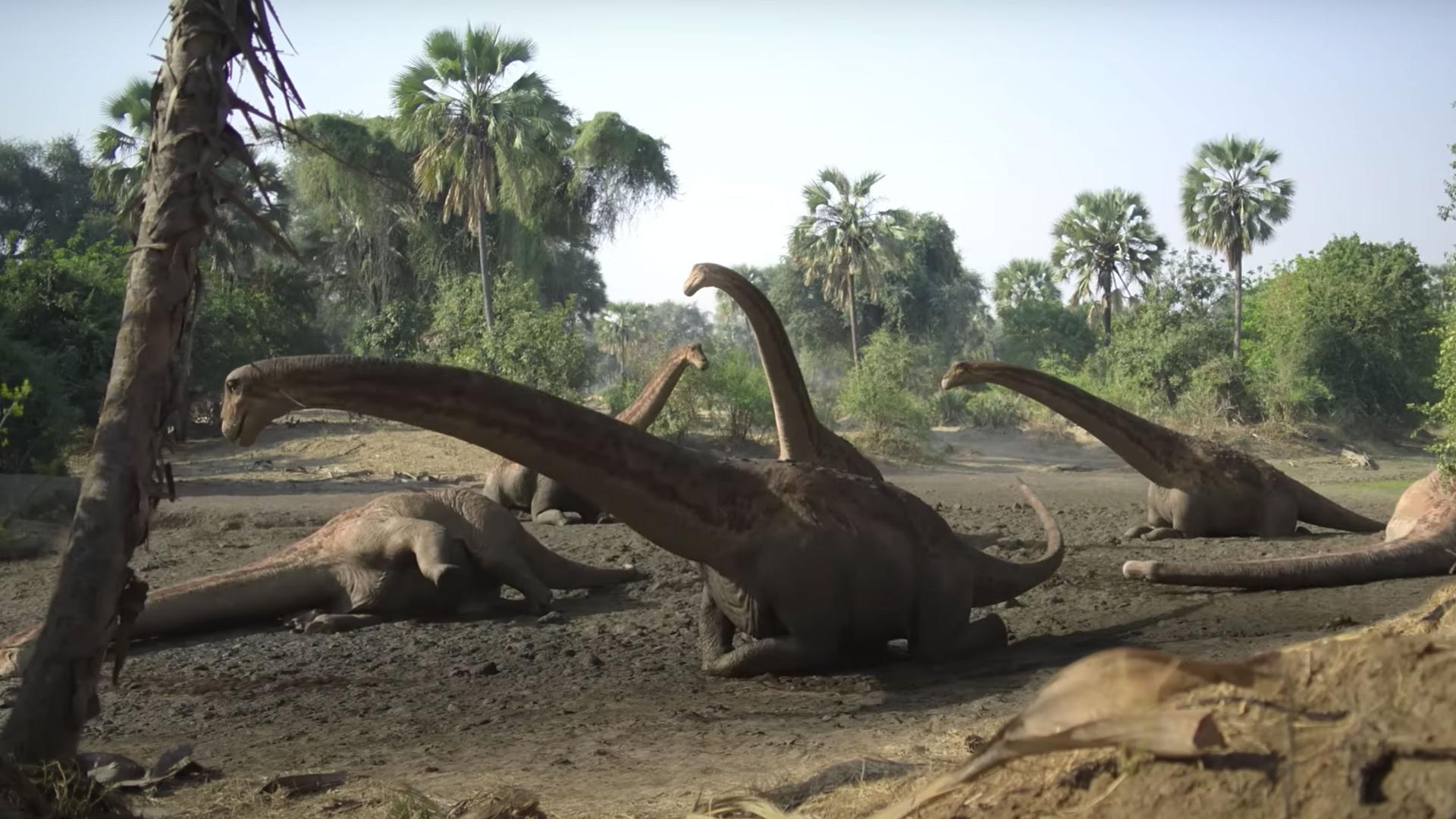What does “dinosaur music” sound like?
A few years ago, composer Anže Rozman invented an instrument called the raptor violin — made out of a moose tibia bone — with that question in mind.
Rozman and his partner, Kara Talve, were on a mission to create prehistoric musical instruments to help transport viewers back in time for the BBC series “Prehistoric Planet.”
The raptor violin is fashioned with a single cello string. When played, it looks like someone’s bowing a femur. And the sound it makes — combined with the BBC National Orchestra of Wales — is transporting, Rozman said.
In one “Prehistoric Planet” scene, the raptor violin plays as a pack of tiny feathered Dromaeosaurids pursue prey through the snow.
“We never try to overdo it,” he said. “It’s just somewhere there. And we hope that on a subconscious level, that would, you know, give the show this otherworldly, back-in-time aspect. Just something for the listener to say, ‘Ooh, what’s that?’”
The violin is just one of several instruments Rozman and Talve created for the series.
The inspiration, Talve said, came out of the blue in the Arizona desert when they stumbled into a gift shop that sold fossils and bones.
The pair works for legendary film composer Hans Zimmer’s studio, Bleeding Fingers, and Zimmer encouraged them to “think outside of the box” for the BBC series.
The triceratone is one of the “weirdest and coolest” instruments they invented.
Imagine a cello neck with dinosaur claws for tuning pegs.
The body of the triceratone is a life-size model skull of a Triceratops. The player strikes its horns with a bow to get the percussive sound. Talve sketched out the instrument, and Zimmer’s master builder created it.
“The triceratone blew me away when I saw it,” Talve said. “I thought it was ridiculous, I’m just going to say that. I was like, this is never going to be possible. Like, it’s a cool idea, but how are you going to do that? So silly, you know? And then I saw it, and I literally lost my breath.”
There’s also a hadro-cello, a petrified wood xylophone and something called a fat-rex — a frame-drum you can play with a toothpick. The “tooth” being the fossilized fang of a plesiosaurus.
Of course, there were no musical instruments 66 million years ago — much less, people.
The Neanderthal bone flute is the world’s oldest known musical instrument. Archaeologists say Neanderthals made this flute some 60,000 years ago out of a hollow bear bone.
But dreaming up instruments of the past led to inspiration and innovation.
Doing the same for a film about the future? “It would have to be something very nihilistic,” Talve mused.
“Yeah,” Rozman agreed, “You would have to first tell me if the movie is about a happy, happy future of humankind. But based on how things are going, I’ll be very surprised if our civilization will exist in the same manner.”
Perhaps the raptor violin is the most timeless of all the instruments.
Talve and Rozman said it’s been a lot of work, but they doubt their prehistoric instruments will be used beyond this project, unless someone like Bjork wants to collaborate. The composers said they’d take the stage with her if invited.
And they’re ready to take the stage to accept an Emmy.
For the “Badlands” episode of “Prehistoric Planet,” they’ve been nominated for one.
